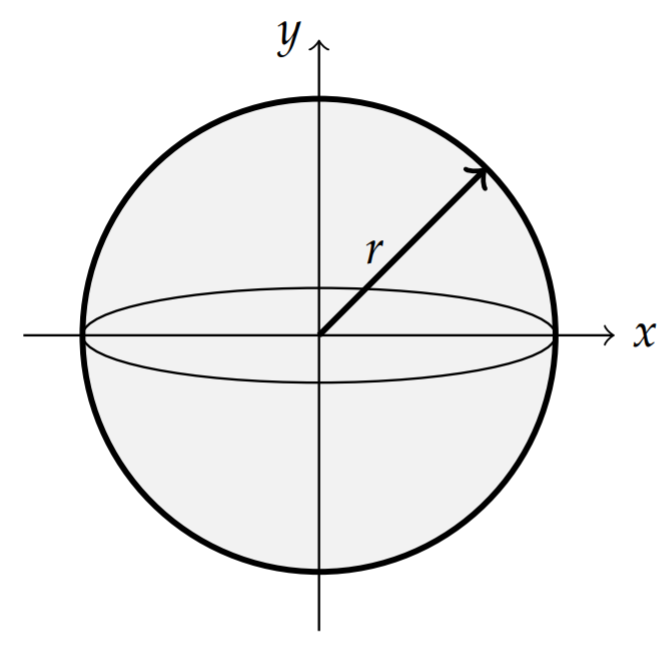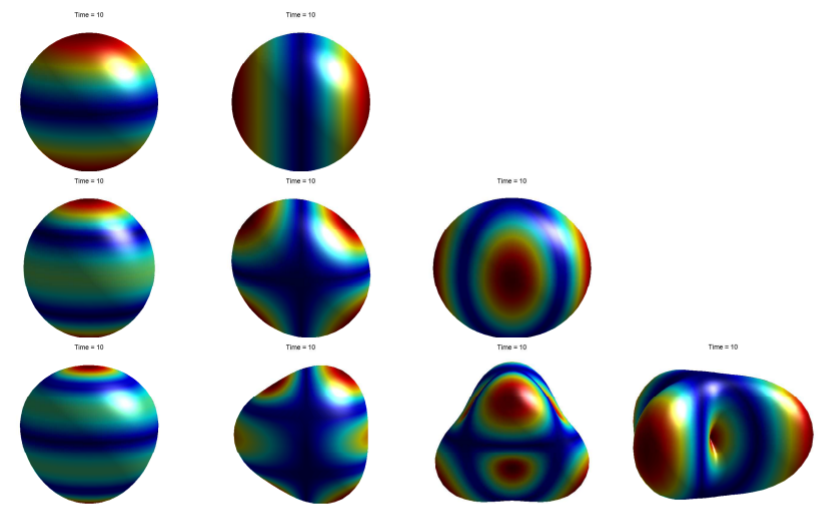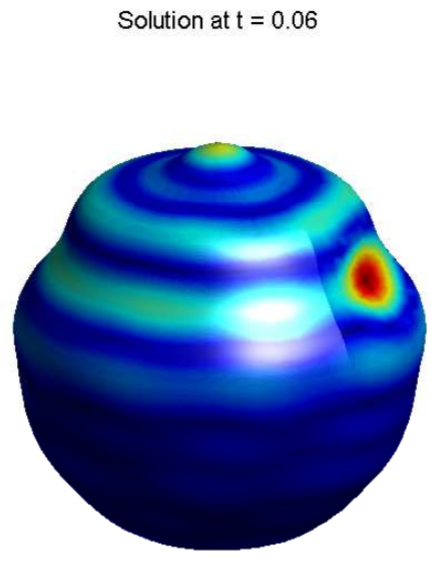6.6: Spherically Symmetric Vibrations
( \newcommand{\kernel}{\mathrm{null}\,}\)
Another application of spherical harmonics is a vibrating spherical membrane, such as a balloon. Just as for the two-dimensional membranes encountered earlier, we let u(θ,ϕ,t) represent the vibrations of the surface about a fixed radius obeying the wave equation, utt=c2∇2u, and satisfying the initial conditions
u(θ,ϕ,0)=f(θ,ϕ),ut(θ,ϕ,0)=g(θ,ϕ).
In spherical coordinates, we have (for ρ=r= constant.)
utt=c2r2(1sinθ∂∂θ(sinθ∂u∂θ)+1sin2θ∂2u∂ϕ2),
where u=u(θ,ϕ,t).

u(θ,ϕ,0)=f(θ,ϕ),ut(θ,ϕ,0)=g(θ,ϕ).
The boundary conditions are given by the periodic boundary conditions
u(θ,0,t)=u(θ,2π,t),uϕ(θ,0,t)=uϕ(θ,2π,t),
where 0<t, and 0<θ<π, and that u=u(θ,ϕ,t) should remain bounded.
Noting that the wave equation takes the form
utt=c2r2Lu, where LYℓm=−ℓ(ℓ+1)Yℓm
for the spherical harmonics Yℓm(θ,ϕ)=Pmℓ(cosθ)eimϕ, then we can seek product solutions of the form
uℓm(θ,ϕ,t)=T(t)Yℓm(θ,ϕ).
Inserting this form into the wave equation in spherical coordinates, we find
T′′Yℓm=−c2r2T(t)ℓ(ℓ+1)Yℓm,
or
T′′+ℓ(ℓ+1)c2r2T(t)
The solutions of this equation are easily found as
T(t)=Acosωℓt+Bsinωℓt,ωℓ=√ℓ(ℓ+1)cr.
Therefore, the product solutions are given by
uℓm(θ,ϕ,t)=[Acosωℓt+Bsinωℓt]Yℓm(θ,ϕ)
for ℓ=0,1,…,m=−ℓ,−ℓ+1,…,ℓ.

Row 1:(1,0),(1,1);Row 2:(2,0),(2,1),(2,2);Row 3:(3,0),(3,1),(3,2),(3,3).
The general solution is found as
u(θ,ϕ,t)=∞∑ℓ=0ℓ∑m=−ℓ[Aℓmcosωℓt+Bℓmsinωℓt]Yℓm(θ,ϕ).
An interesting problem is to consider hitting the balloon with a velocity impulse while at rest. An example of such a solution is shown in Figure 6.6.3. In this images several modes are excited after the impulse.



